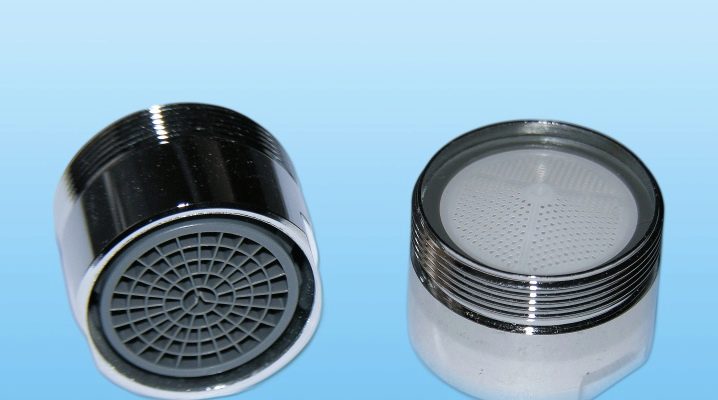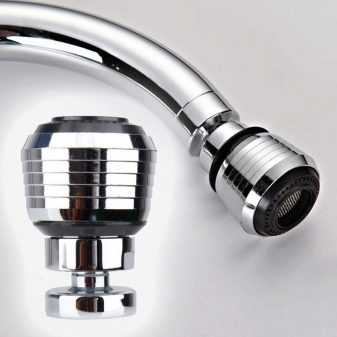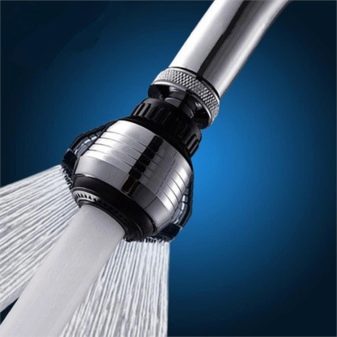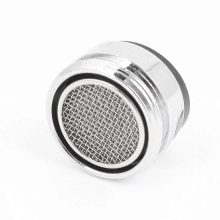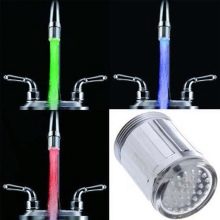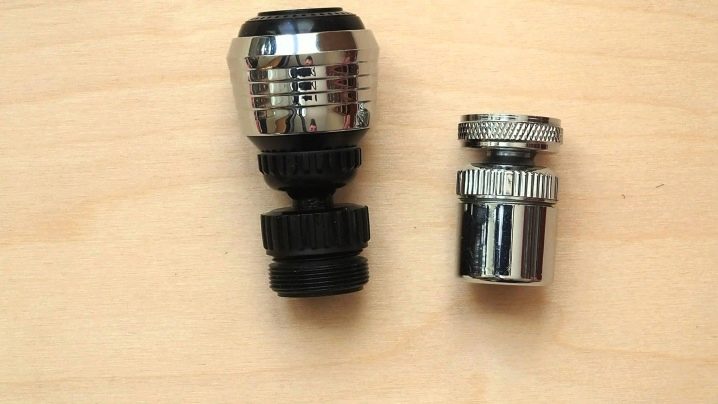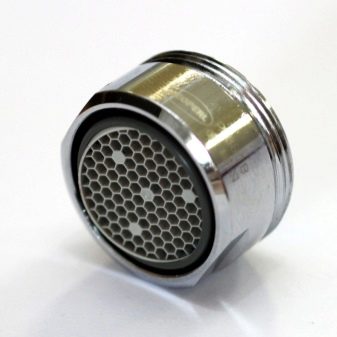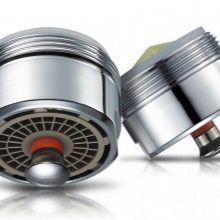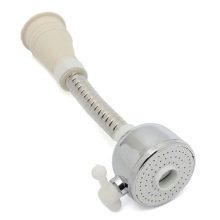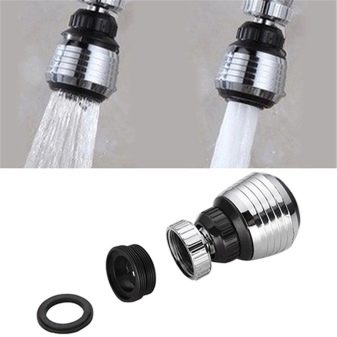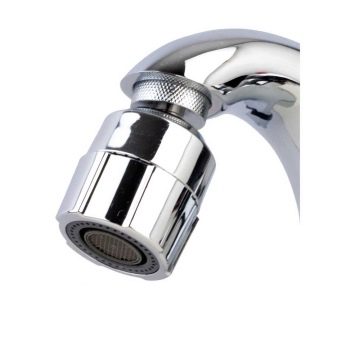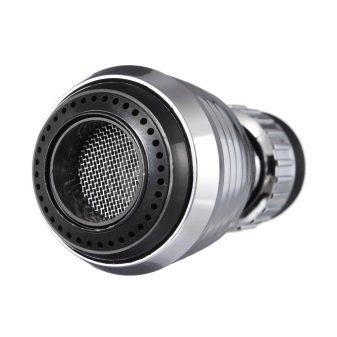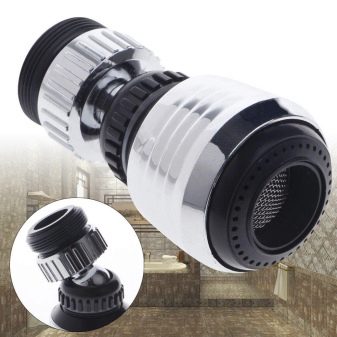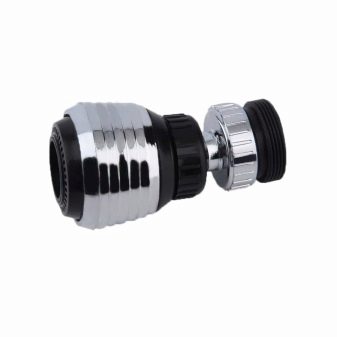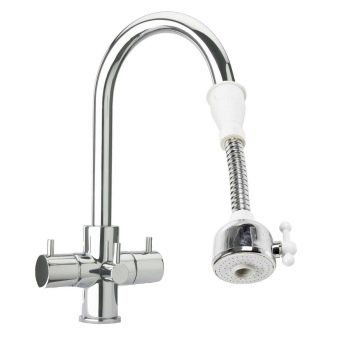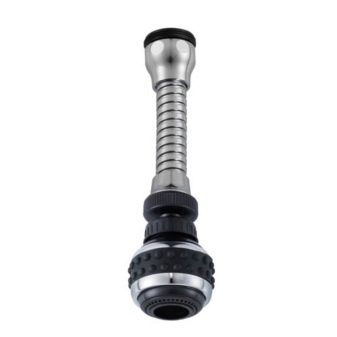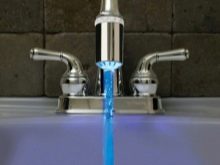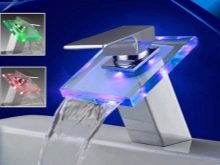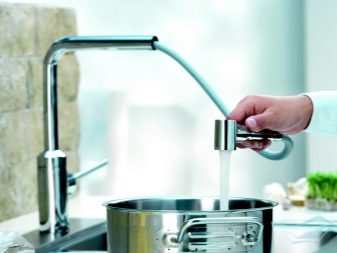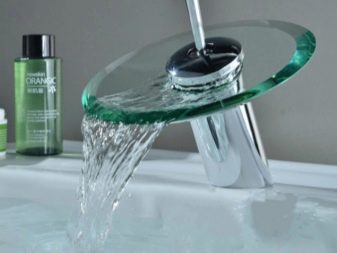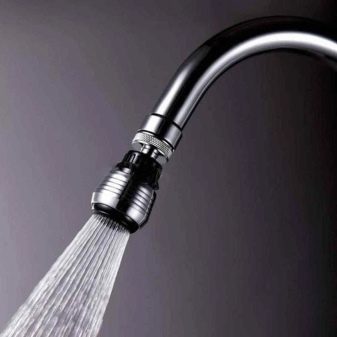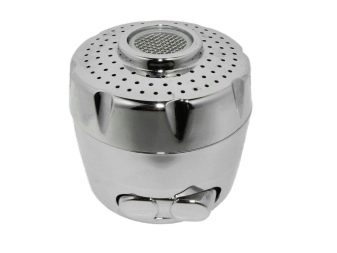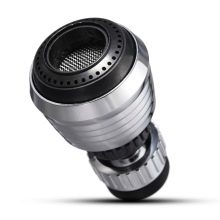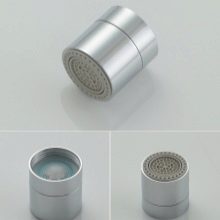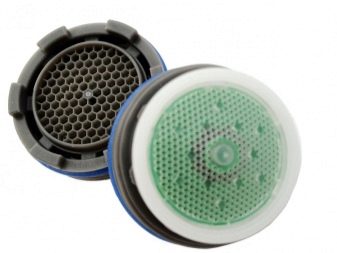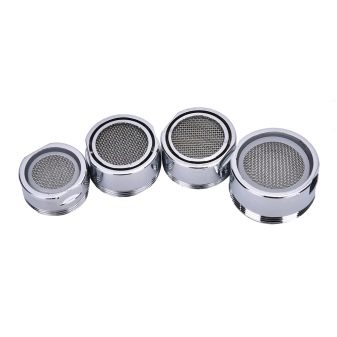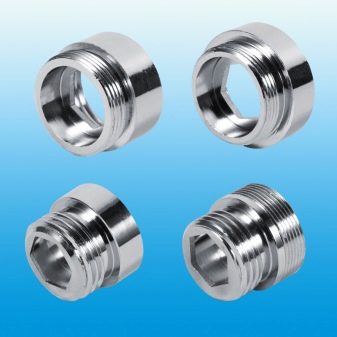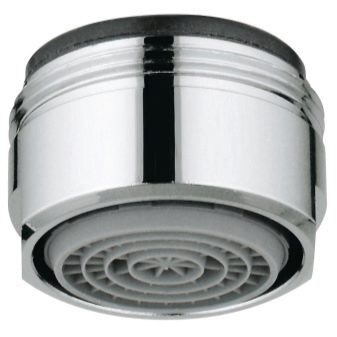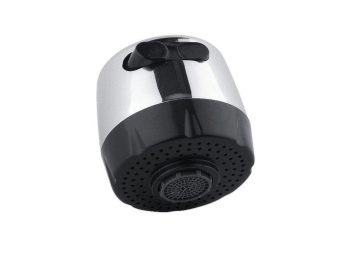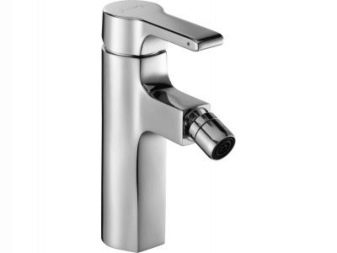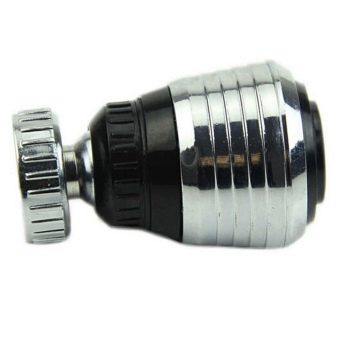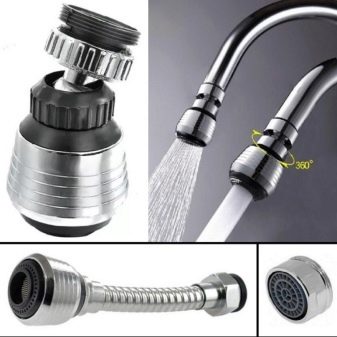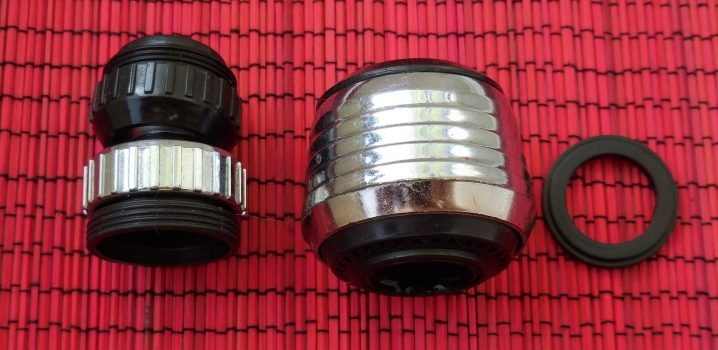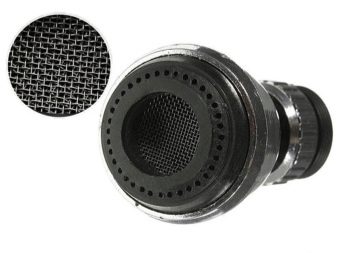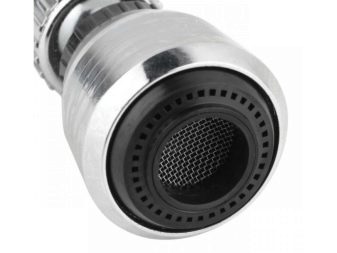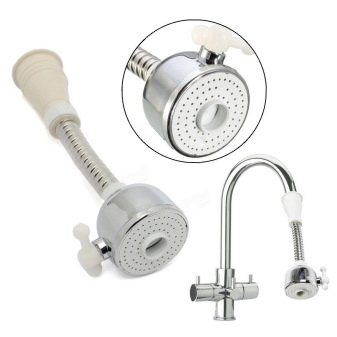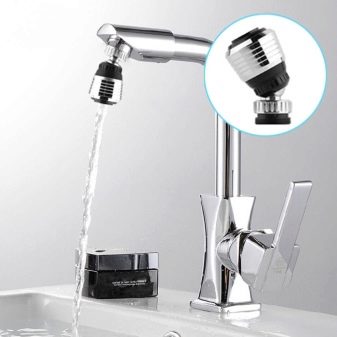Mixer aerators: types and purpose
Aerators are installed on all modern faucets and are a strainer on the tap of a faucet. This small element is important for the plumbing system.
Many people mistakenly believe that this is a kind of filter, and dismantle it. They motivate their actions by using special water purification devices that are better and more efficient. Others believe that such a “mesh” reduces the already low water pressure, and also removes it from the mixer. However, this is fundamentally wrong - let's see why.
What it is?
Aerator is a mesh in the mixer. If you try to stick your finger into the faucet (the space from which water flows), then you will feel the presence of a nozzle in it - a grid. This is an aerator.
It includes a housing and a plastic module equipped with a filter system. Between them - rubber or silicone pads. The module, in turn, consists of several filter nets, which fit in a certain way. The first two provide the direction of the jet, and also perform the function of purification, the others - mix water with air bubbles.
Air enters the device through small holes that are located around its perimeter. After that, oxygen is in the inner chamber, where it “meets” with water.
For the manufacture of the device used very common materials.
- Metal. Available models with low price. However, they are short-lived, because under the influence of water and limescale, their surface is covered with corrosion and is destroyed.
- Polymers. Such aerators are not afraid of exposure to water, and therefore their service life is longer. The advantage is the affordability.
- Non-ferrous metals (bronze, brass), ceramics. The most expensive, but also the highest quality aerators.
Purpose
People interested in linguistics probably noticed a similarity between the term “aerator” and the Greek word “aeration,” which means “air.”This similarity is not accidental, since the design of the aerator allows water to be mixed with air in order to reduce water consumption without reducing the jet intensity noticeably to the user. Simply put, the mesh nozzle installed on the faucet is used to save water. And the latter can reach 75%.
On average, about 15 liters of water flow through the faucet per minute, using an aerator allows you to reduce this figure by 2-2.5 times. This results from the fact that when mixing with air the volume of a stream increases, therefore pressure remains invariable.
Water saving is not the only function of the aerator. The device also avoids the formation of splashes. Oxygenated water “softens”, becomes foamy - this provides “enveloping” of the object being washed without splashing the liquid. In this case, the consumer does not experience a lack of air flow, he does not feel the decrease in water volume when using an aerator.
It is important that when passing through air bubbles, the water becomes less chlorinated: oxygen molecules bind and remove the residual chlorine molecules.And the presence of oxygen bubbles in it contributes to a better cleaning of surfaces: detergents are activated in a gaseous environment. Finally, large and medium particles of limescale impurities linger in the “grate” without falling into the water jet.
Thus, such an "economy" for the mixer allows you to reduce water consumption, as well as improve its quality.
The advantages of this sanitary element are characterized by the fact that it:
- saves water;
- improves water quality;
- reduces the amount of noise when the water leaves the tap;
- has an affordable price;
- just installed and also replaced by another.
The aerator should be changed periodically (once a year). When using old pipes, the replacement process is needed every 6 months.
Kinds
There are several types of aerators.
Vacuum
The device is equipped with a vacuum valve. With it, it is possible to squeeze water under pressure, due to which aeration is performed. The saving of water consumption is colossal: just 1.1 liter comes out of the tap per minute. Depending on the characteristics of the valve, there are automatic, kinetic, and combined varieties of the valve.
Turning
It is so called because the aerator has 2 modes of operation: in the form of a jet and spray. The principle of operation is based on the change in the strength of the water flow. A feature of the swivel models is the presence of a swivel. Due to this, the jet of water can be directed at any angle, which is very convenient.
Flexible hose aerator
The principle of operation and design of this unit is similar to the functioning of the previous one. However, the aerator here is a flexible hose. The diffuser allows dividing the water into small streams, pre-saturating it with oxygen in the vortex chamber, and the flexible “tube” makes it possible to direct the stream at a convenient angle. Rotary and aerator on a flexible hose is often installed on the kitchen plumbing elements. The considered type of device is especially convenient with small washing sizes or insufficient dynamic spout. Saving water when using this model is achieved by enriching the liquid with air bubbles, as well as due to the fact that the jet can be directed to a specific contaminated object.
Illuminated aerator
When a jet falls, the aerator illuminates it with different colors, indicating the temperature of the liquid. Green light indicates a comfortable and safe temperature up to 29 C, blue - having a temperature of 30-38 C, red - water with a temperature of over 38 C. Functioning is possible due to the rotation of the device’s own turbine. In other words, they have no power supply, and therefore are completely safe. In addition to the practical function, such models have an aesthetic sense. Most often installed on the faucets in the bathroom and shower, but nothing prevents to equip such an aerator and a kitchen faucet.
By way of installation, external and internal aerators are distinguished. The first are mounted on the external thread of the spout. Internal aerators are wound on the internal thread, respectively.
There are also decorative aerators. By their principle of action, they can refer to any species discussed above. The peculiarity lies in the fact that the aerator has the appearance of an animal or another figure. Such a faucet will interest children and distract them (true if for some reason the child does not want to take a bath, for example).In addition to "children's", decorative aerators can be in the form of a spiral or have other design solutions.
The appearance of the nozzle affects the principle of operation of the aerator. There are two types of sprayers.
- Disk. Equipped with discs with small holes. When passing through them, the flow of water breaks into streams, which are then dissected on the reflector.
- Slotted. The device is equipped with slots, when passing through which water is saturated with oxygen. Then the water stream crashes into the deflecting disk, causing the liquid to be broken into droplets. Finally, the jet splitting through the mesh.
If a mixer of a non-standard shape or size is used, for example, a rectangular spout, then the aerator must also conform to it in shape and size. In this case, you will have to look for a device for a specific model. Facilitate the search, you can immediately contact the manufacturer of the original plumbing (the same brand that stands in your home). As a rule, leading manufacturers produce not only mixers, but also components for them separately.
Modern models of aerators are not only regulators of water flow.but can also become a filter.Such models have additional purification systems based on activated carbon, ion-exchange magnetic mesh. It is possible to saturate water with microelements with a more expensive device and clean it from viruses. Important point: such aerators can be installed only on the faucet with cold water. If you pass hot water through the filter, it will lose its cleansing properties.
Among the "new products" - a version of the aerator with pressure compensation. As you know, with increasing pressure increases and water consumption. Compensating devices prevent this with an adjustable sealing ring, which keeps the volume of water constant, regardless of pressure. As well as bottom valves for mixers, such devices can reduce water consumption by an average of 40-50%.
Also noteworthy is the sensor nozzle, which is installed instead of an aerator and also serves to save tap water. At the core of its operation is a reaction to movement. If you put your hands under the faucet, the water begins to flow automatically. It is necessary to remove the hands as the jet stops. For more convenient use, the system is equipped with a button,thanks to which the transition from hand-made nozzles (required if you need to dial the bathroom, fill the kettle) in automatic mode.
Depending on the type of aerator used, different types of water flow can be created.
- Aerated. Filled with air bubbles that visually and kinetically felt as foamed, “soft” water. The jets do not spray. This option is best suited for domestic use.
- Laminar. The stream turns out equal, intensive, without splashes. This type of water flow is used in medical institutions and laboratories.
- Spray. Thanks to the spray creates a lot of volumetric miniature jets. Flow volume is enough to cover the arms. Usually used in public places.
Dimensions
Aerators can differ not only the principle of action and appearance, but also the size of the thread. This is a very important parameter, since the size of the thread of the device must match the diameter of the spout. In other words, the diameter of the thread in 18 ml is not suitable for a crane having a diameter of 22 mm, for example. By the way, the standard internal diameter of the spout is just the values of 18 and 19 mm.
Traditionally, the diameter of the aerator is 12-1200 mm, and the diameter of the air channel is from 20 to 2200 mm. Device height - from 14 to 2000 mm.
There are 3 standards for the diameter of the external / internal thread: 18/16, 24/22, 28/26 mm. That is, if an external thread of 18 mm is used for a crane, then a device with a diameter of 16 mm is required for the same crane (if necessary, install an internal aerator).
In addition to size, it is important that the device has a suitable type of thread: external or internal. An external aerator with an external thread and vice versa is required for a male threaded spout.
Manufacturers
Today there are many manufacturers of aerators on the market, but not every one of them can boast of impeccable product quality. The following companies are the most authoritative and invariably at the top of the ranking of manufacturers of sanitary devices.
- Grohe. The world famous brand from Germany, characterized by high quality aerators. The service life of some models can reach 10 years. It is not surprising that the devices have a rather high cost (350-1000 rubles).
- Oras. Production is established in Finland.Responses also allow to speak about high quality of products. The range includes aerators, both complete with a mixer, and in the form of external devices. The price of the latter varies in the range of 250-500 rubles.
One of the most important selection criteria is the capacity of the device, that is, an indicator of what the maximum amount of water in liters the aerator will miss per minute. A standard mixer, not equipped with an aerator, passes 12-15 liters per minute.
If you use an aerator with a capacity of 3.5 liters / min, you can reduce water consumption by 75%. With a capacity of 5.5 l / min, the savings will be 49%.
- Timo. Another Finnish manufacturer who can be proud of impeccable product quality. Subject to the installation of the manufacturer's products by representatives of the company's service center, as well as under the operating conditions, Timo gives a 5-year warranty on plumbing elements and plumbing.
- Jacob Delafon. A French brand known as a winner in the Bathroom Design nomination. Offers quality premium segment aerators, the average price of which is 500-700 rubles.
Popular are also devices from companies Gardena, Roka, Lemark.
How to choose?
Consider the main criteria that must be followed when choosing an aerator.
- Thread Type: external or internal. By the way, if you bought an outdoor aerator, and the faucet has an internal spout, you can use a special adapter. In this case, you can use the purchased item, however, it will be located slightly lower - closer to the sink.
- Material. Preference should be given to brass, copper, stainless steel aerators. They may have a considerable cost (compared to plastic), but it is usually justified by the long service life of the devices.
- Diameter. It is important that the diameter of the aerator coincides with the diameter of the spout. Standard are the values of diameters equal to 20, 22, 24, 28 mm.
- Design. The aerator and the faucet should become one not only from a technical but also from an aesthetic point of view. For example, if the faucet is stylized to be bronze, then the aerator for it should be chosen the same (first of all it concerns external devices).
If you rarely use a tap (for example, you do not live in an apartment), you can save money and install plastic aerators. If necessary, you can replace them with more reliable.They do not stick to the faucet and can be easily removed, unlike aluminum and steel structures, which are subject to corrosion and consequently stick to the spout. Sometimes it is problematic to remove them.
In pursuit of reducing the amount of water consumed should follow common sense. In a bath or shower, excessive savings result in the inconvenience of using them. The recommended throughput for the shower head and faucet in the bathroom is -3.5-5 l / min, for washbasins - not more than 1.8 l / min. For the kitchen, this figure is maximum - up to 5 l / min. However, if you use an adjustable aerator (one that can be rotated at the right angle), the throughput rate can be reduced.
Recommendations
As already mentioned, the device periodically needs to be replaced. Signs of a malfunction can be considered a decrease in water pressure (which indicates that the filter grids were clogged with lime deposits and pollution), the absence of a characteristic hissing sound when the water jet leaves the mixer. However, it is better not to wait for such “symptoms”, but to change the aerator every six months or a year.
You can remove the aerator with your own hands, using pliers or a metal wrench. The head of the device has 2 faces directed in different directions. Your task is to pick them up with a key and turn clockwise (if you look at the crane from above).
After the aerator is removed, assess its condition. - perhaps it is enough just to clean it, and not to change it. Remove the strainer from the cylinder, disassemble the rest. Wash the elements under running water. If there are traces of limescale, they can be left in a cleaning solution or a solution of apple cider vinegar and hold until the deposit dissolves. Do not undergo a similar procedure to seals. If they become unusable, it is worth buying new ones.
After all the parts are cleaned, assemble the aerator and screw it in, making counter-clockwise movements with the key. Turn on the faucet, make sure there is no leakage, if it is detected - tighten the aerator again with the key. Try to switch the water intensity, make sure that the device is working properly at any pressure.
If there is no possibility or desire to clean the device from the plaque, you can purchase a new one.To do this, you should also unscrew the old aerator, and instead install a new one. To prevent damage to the spout coating when working with a key or pliers, wrap the working part of the instrument with pliers.
As you can see, you can do the replacement or clean the aerator with your own hands, without attracting professionals.
On the types and purpose of aerators for mixers, see the following video.
